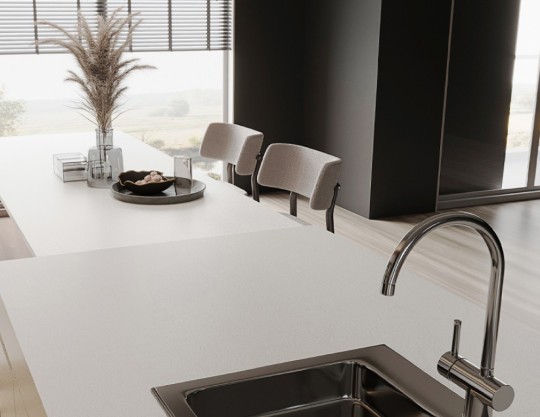Interior design contrasts
References
Contrasts are a frequently employed method in interior design to enhance designs. Architects and designers are keen to exploit differences in textures, colours, materials or styles to bring more depth, dynamism and expressiveness to interiors. The importance of contrasts in architecture extends beyond the purely visual aspects - they also influence the atmosphere and functionality of spaces, both residential and commercial.

Harmonious (or quite the opposite!) combinations of different types of elements, such as traditional and modern, austere and cosy, bright and warm, help to achieve eye-catching results. Let's take a look at the most interesting compositions, which, skilfully applied, are a guarantee of remarkable interior designs.
Classics and modernity
Vintage and retro styles remain on the lists of the most popular interior trends for many years. Timeless furniture, classic accessories, items that take you on a sentimental journey to former eras - their incorporation into contemporary interiors provides homes with soul and originality. It is also increasingly common to observe situations in which original elements such as antique ceilings, wooden parquets or rich ornamentation on balustrades are preserved during the renovation of older flats and houses. The combination of these with modern elements produces interesting, intriguing effects. It also demonstrates a respect for history and classic solutions.

Texture contrasts
Contrasting textures build up layers inside the interiors - an interesting architectural treatment that adds originality and originality to the rooms. What are the most common examples?
- Stone or its substitutes (such as quartz surface, large ceramic slabs or acrylic solid surface) and wood. Stone walls or countertops will look great accompanied by wooden floors or furniture. The contrast between the hard, cold texture of stone and the warmth of wood creates an interesting visual and sensory effect.
- Metal and glass - the combination of the rawness of metal and the softness of glass is often used in modern, minimalist interiors.
- Textiles and concrete - the contrast between soft, textile materials and the severity of concrete can often be found in loft and industrial styles.

Colour contrasts
It is one of the most common types of contrast. Colour contrasts affect not only the aesthetics, but also the impression regarding the optical enlargement or decrease of a space. What are the most common?
- warm-cold contrasts, i.e. the juxtaposition of warm colours (e.g. red, orange) and cold colours (e.g. blue, graphite),
- light-dark contrasts, i.e. a combination of, for example, soft white furniture with dark grey flooring,
- monochromatic contrasts, i.e. the use of different shades of the same colour - this is particularly prevalent in modern, minimalist designs.

In order to use contrasts in the design of a flat, it is advisable to consider carefully the needs of the occupants and to find components that allow an aesthetically pleasing and, above all, practical effect. Examples of materials include natural stone substitutes - quartz surface, large ceramic slabs or acrylic solid surface. The wide range of decors and the varied designs, colours and finishings allow for a multitude of different compositions.
In the Architype offering you will find a whole cross-section of decors, including:
- with delicate, bright patterns,
- concrete imitations,
- slabs with the same texture and finish as marble or granite,
- in dark, stylish colours,
- with patterns having clear, contrasting veins,
- in vivid, expressive colours.
Explore the catalogue to discover all the decors that will enable you to furnish your home exactly the way you want it!



